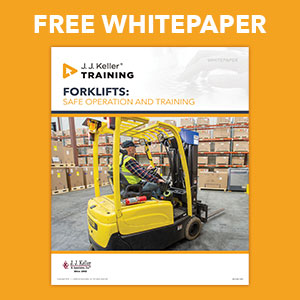
Powered industrial trucks (PITs) like forklifts are widely used throughout many industries, but they can also cause serious injuries. This free whitepaper features easy-to-implement guidance from J. J. Keller’s experts to help keep businesses and their employees safe around PITs. This includes essential information on PIT hazards, compliance with OSHA’s PIT Standard, operator training, and much more. Download your FREE copy today!
Sponsored by J. J. Keller & Associates Inc.
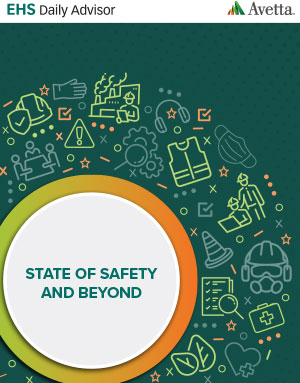
The State of Safety and Beyond Survey gathered the insight of 314 environment, health, and safety (EHS) professionals about how their organizations are dealing with current safety challenges and what they’re expecting in the future. These concerns run the gamut from the very real threat of COVID-19 to perennial issues such as training, leadership, safety culture, and generational differences.
Sponsored by Avetta®
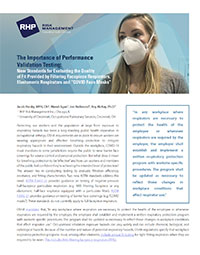
Protecting people from exposure to respiratory hazards in both occupational and non-occupational settings is a public health imperative. The use of effective respiratory protection is one of the primary ways to protect against such hazards. Respirator Fit Capability (RFC) testing is the process used to assess whether a specific make and model of respirator provides acceptable fitting characteristics for a broad spectrum of potential wearers. RHP Risk Management conducts respirator and barrier face-covering testing for PPE manufacturers seeking quantitative verification under ASTM F3407-20 and ASTM F3502-21 standards, both of which were created to ensure protection from exposure to respiratory hazards.
Sponsored by RHP Risk Management

Complying with OSHA regulations is essential, but it’s only the bare minimum as far as maintaining a safe workplace. There are many other steps you can take to protect your employees from potential hazards. Developed by our EHS experts, this whitepaper contains helpful tips on training, written safety plans, chemical management, incident tracking, audits, and other important topics. It’s the perfect guide to ensuring your business’s safety program is up to par.
Sponsored by J. J. Keller & Associates Inc.
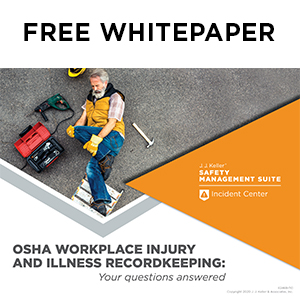
OSHA’s regulations for recording workplace injuries and illnesses can be much more complicated than they seem. Don’t let a poor judgment call turn into a violation: Learn how the regulations apply to your organization with this informative whitepaper from J. J. Keller. We’ll walk you through OSHA recordkeeping requirements while providing answers to your biggest questions. Download today for FREE and make sure you know how to avoid those costly OSHA fines and penalties!
Sponsored by J. J. Keller & Associates Inc.
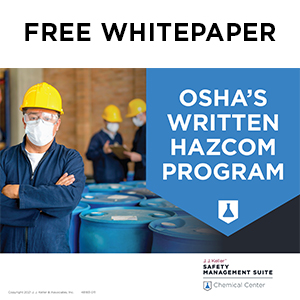
A wide variety of chemicals – from cleaning fluids to pharmaceuticals, pesticides, paints, and more – are used in workplaces across the country, and workers have a right to know about the hazards they may face on the job. This whitepaper provides easy-to-follow information on establishing a written HazCom program that meets all OSHA requirements. Download your FREE copy today and get expert guidance on safety data sheets, compliant labels, and other important topics!
Sponsored by J. J. Keller & Associates Inc.
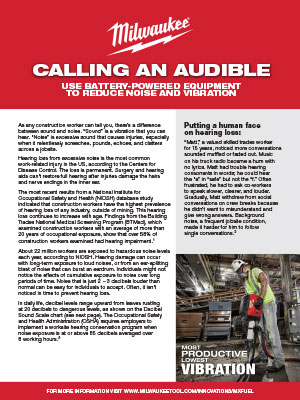
The MX FUEL™ cordless system revolutionizes the light equipment market by delivering the performance, run-time, and durability demanded by the trades without the hazards associated with emissions, noise, vibration, and the frustrations of gas maintenance. Each of the solutions on the MX FUEL™ System go beyond the limitations of gasoline and power cords and operate off one completely compatible battery system.
Sponsored by Milwaukee Electric Tool Corp.
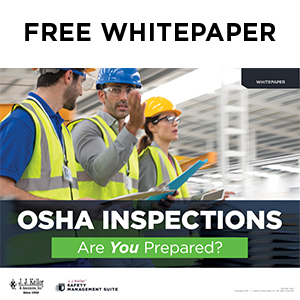
OSHA conducts an average of 35,000 inspections each year – and your workplace could be one of them. Don’t get caught by surprise: This in-depth whitepaper from the experts at J. J. Keller offers a complete overview of the inspection process. From the opening conference to the facility walk-through, records review, citations, and more, you’ll be ready for everything if an inspector knocks on your door. Download your FREE whitepaper today!
Sponsored by J. J. Keller & Associates Inc.

No matter your industry, there’s a strong chance Federal and/or State OSHA requires your business to have written safety plans. Not only do these plans keep employees safe, but they also protect you from penalties and fines. Learn how written safety plan regulations apply to your organization in this FREE whitepaper from J. J. Keller. You’ll also find out how Safety Management Suite, our all-in-one safety management solution, can help you get fully compliant plans in just minutes.
Sponsored by J. J. Keller & Associates Inc.
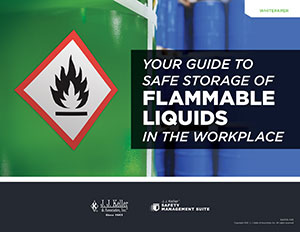
Flammable liquids are used in almost every type of workplace. Many employees are exposed to these hazardous substances and must be trained to keep themselves and their coworkers safe. Written by the safety and compliance experts at J. J. Keller, this new whitepaper contains easy-to-understand info on OSHA-compliant flammable liquid storage including Safety Data Sheets (SDSs), container labels, fire prevention, and more. Download your FREE copy today and ensure your chemical management program is fully compliant!
Sponsored by J. J. Keller & Associates Inc.